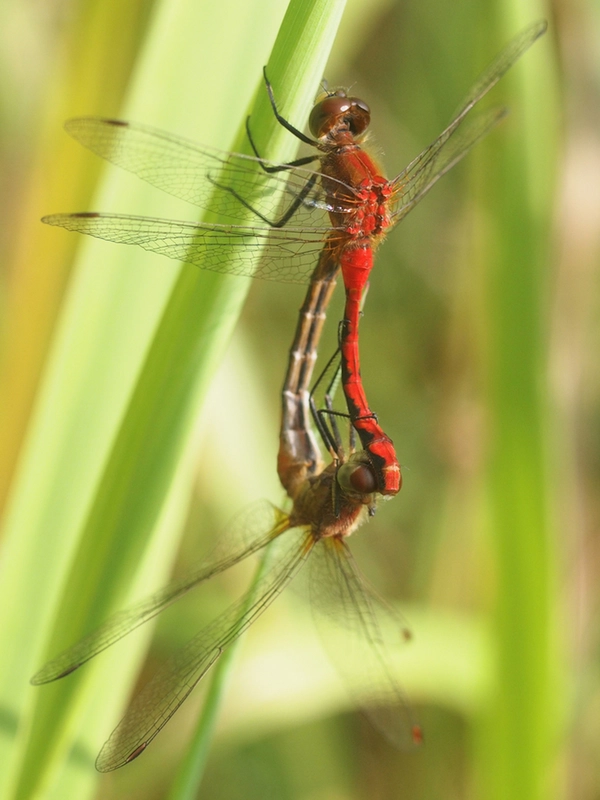Supporting Denman’s Biodiversity
L. Hermanutz
Of late, “diversity” has become a very hot topic – cultural diversity, gender diversity and of course, biological diversity OR Biodiversity. Really, it simply means all the native plants and animals and other living things like lichens, mosses, fungi. And on Denman, we are very fortunate to be in the Coastal Douglas-Fir Forest, a rare ecosystem in Canada and globally.
Having a healthy and diverse ecosystem helps us all – from providing “ecosystem services” for humans (such as clean water and air, food, relaxation and recreation, and of course mental health support), to homes for all our native plants and animals!
Biodiversity
Of late, “diversity” has become a very hot topic – cultural diversity, gender diversity and of course, biological diversity OR Biodiversity. Really, it simply means all the native plants and animals and other living things like lichens, mosses, fungi. And on Denman, we are very fortunate to be in the Coastal Douglas-Fir Forest, a rare ecosystem in Canada and globally
Healthy and diverse ecosystem
Having a healthy and diverse ecosystem helps us all – from providing “ecosystem services” for humans (such as clean water and air, food, relaxation and recreation, and of course mental health support), to homes for all our native plants and animals!
We have all heard that we are losing native plants and animals at an alarming rate – scientists suggested that we could loose upwards of a million species if actions aren’t taken to reverse the loss. The UN report found that “Nature is declining globally at rates unprecedented in human history”.
The report, based on a thorough analysis of the available evidence, found 5 reasons for this decline (in descending order): (1) changes in land and sea use; (2) direct exploitation of organisms; (3) climate change; (4) pollution and (5) invasive alien species.
BUT WAIT WE CAN DO SOMETHING!
Although sobering news, there are many impactful things we can do where we live! Grassroots action has always been very strong on our island – and so there are direct actions we can take to keep Denman green and healthy for ALL!
So what might those be?
Well we have been very proactive on Denman setting aside Protected Areas (PA) – various types of Protected Areas account for approx. 26% of the island – places such as Provincial Parks, Ecological/Nature Reserves and covenanted areas, all help support biodiversity. We’re close to the “30% by 2030” global goal! Denman residents are great supporters and users of our Protected Areas (PA) – CONGRATS to us! So that goes a long way towards reversing habitat loss (threat #1 above). Many of the PAs are our “biodiversity hotspots” that help endangered species survive, such as the Taylor’s Checkerspot Butterfly. The next step might be to add “connectivity” – corridors that link the PAs so that animals have a safe way to get from one PA to another. If you are interested in either gifting land to the DCA or ITC (there are tax benefits), or thinking about putting a conservation covenant on your land please contact us.

Protected Areas (PA) , places such as Provincial Parks, Ecological/Nature Reserves and covenanted areas, all help support biodiversity
Denman setting aside Protected Areas (PA)
approx.
26%
of the island
Denman setting aside Protected Areas (PA)
Close to the
30%
by 2030 global goal!
WHAT CAN WE DO ON OUR OWN LAND?
But what else can we do, especially on our own properties, around our homes? One of the major threats to biodiversity is invasive species (threat #5). On Denman we have several widespread and invasive plants – English Holly, English Ivy, Scotch Broom, and Daphne being the most urgent to get rid of! Each can completely take over an area and squeeze out native species – and that means not only can’t the native plants grow, it affects all the animals that use the native plants like bees, butterflies, and birds. Many websites offer great information
We recommend starting small. Don’t take on too much at once, as you’ll feel defeated! Slow and steady and you’ll get it done. It is very gratifying to see biodiversity return after an area has been cleared of invasive species.
Anne Page of DIRA-Pesticide Free committee has started a “Broom Busters” group on Denman; if you are interested in participating contact annepage@telus.net.
Many people are worried about Giant Hogweed or Knotweed, but on Denman we have both under control! IF YOU DO FIND EITHER OF THESE PLANTS, please contact DCA.
ONCE REMOVED WHAT NOW?
WHAT Now that you have removed the invasive plants, what do you plant now?
There are a number of native plants that would help nurture the pollinators as well as birds, other species – take a look at “What to plant instead” that lists what alternates there are to invasive species OR for a shorter version.
We have so many beautiful flowering trees, shrubs, perennials and annuals that will diversify out landscape, and support our animals. Local nurseries such as Streamside Nursery on Bowser carry local native plants.

